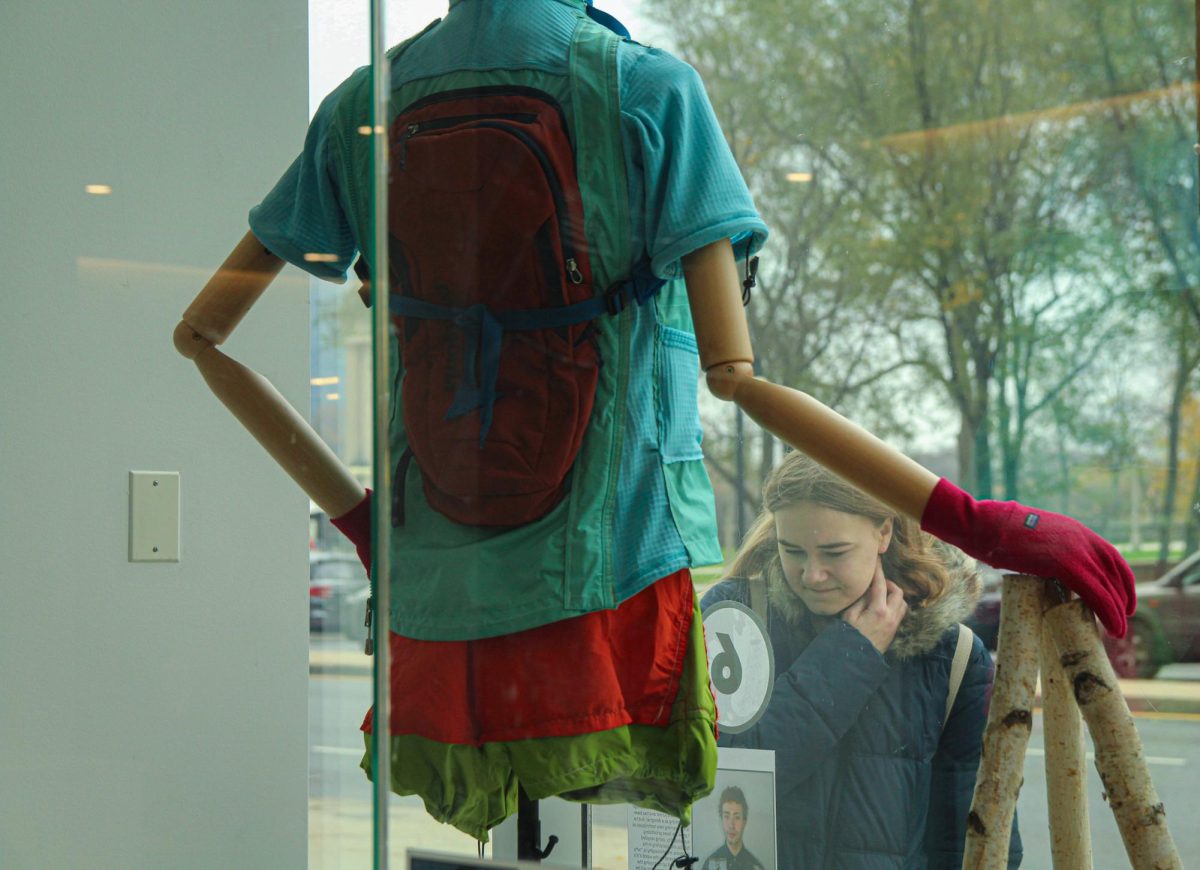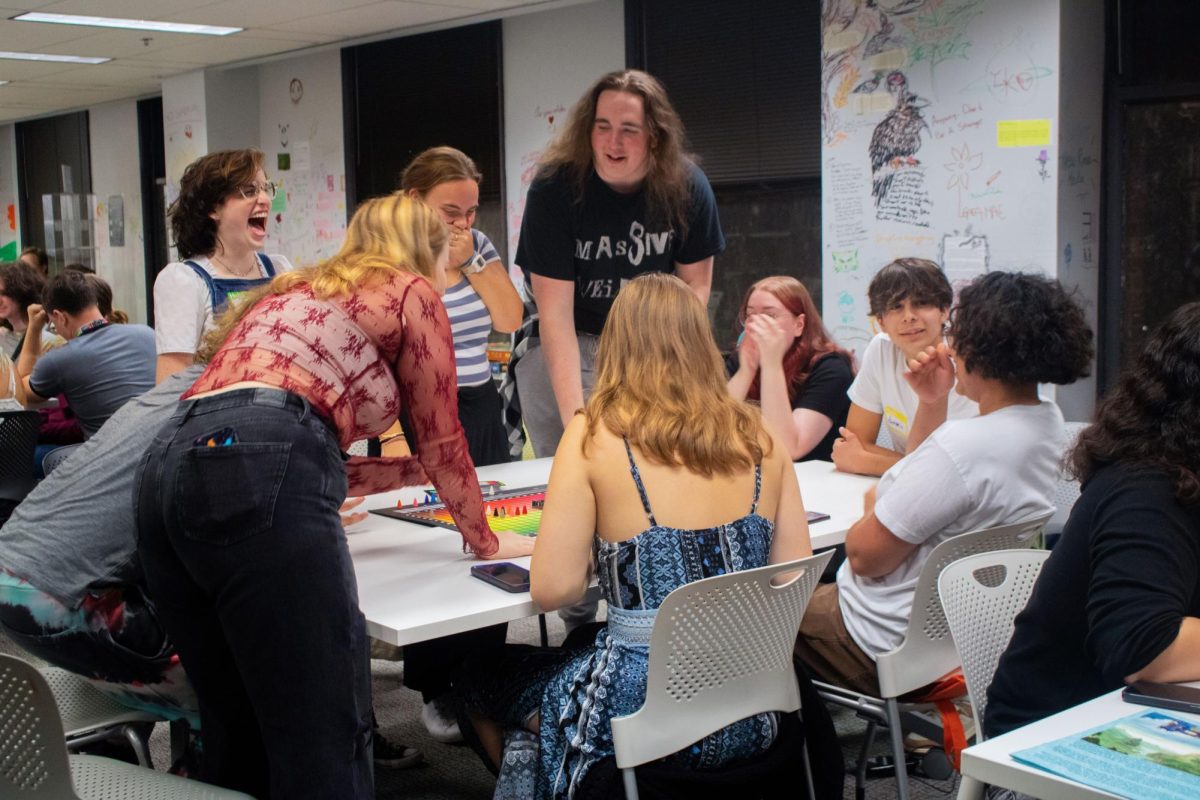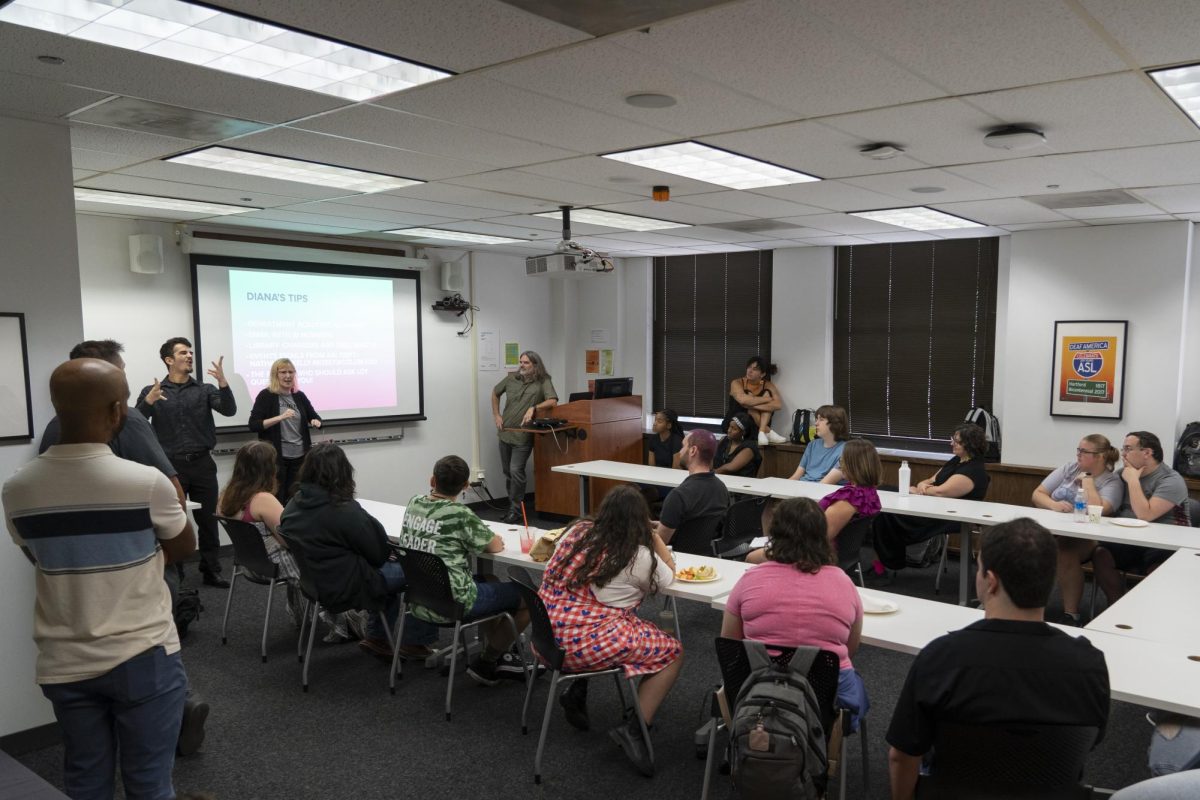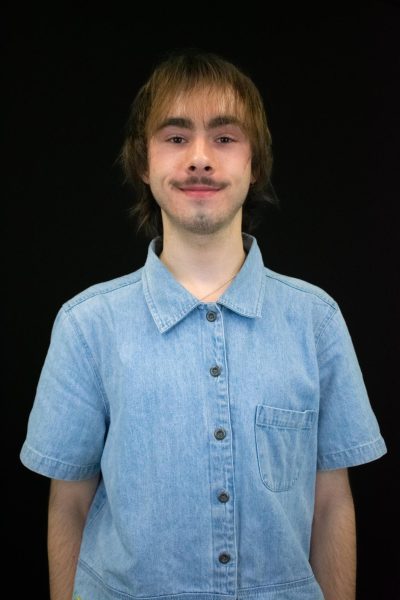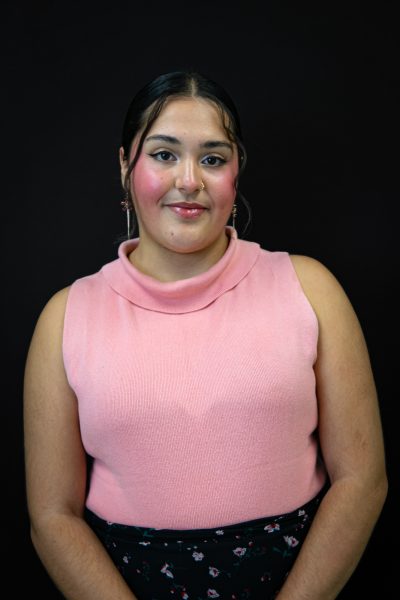The School of Fashion partnered with the outdoor brand Patagonia to create window displays at 618 S. Michigan this month that showcases the work of 11 different visual merchandisers and fashion designers.
The students are competing in a Worn Wear competition to reimagine Patagonia’s used merchandise into fresh designs.
The windows feature 11 vastly different garments, each constructed by one of the designers from clothing provided by Patagonia’s Worn Wear store that designers then deconstruct to create a new finished product.
The collaboration is part of the School of Fashion’s Nothing New November initiative, where students are encouraged to purchase nothing new and reflect upon the ways they consume fashion.
“I was kind of thinking about how we do this,” said Noelle Bushman, administrative assistant for the School of Fashion and manager of the 618 S. Michigan windows on the Columbia building that houses classrooms, a gallery and event space. “I just thought that their view on sustainability, specifically their work in the Worn Wear sector, really paralleled what we try to do in the School of Fashion.”
The Patagonia x Worn Wear store in Fulton Market, which opened earlier this month, is the first brick-and-mortar of its kind that sells used Patagonia clothing. Bushman reached out to Patagonia and pitched the idea of a competition that could also serve as an interactive window display, “and it just kind of blossomed from there,” she said.
Past collaborations between brands and the college didn’t include visual merchandisers, meaning students like senior fashion studies major Haven Hathaway, who is concentrating in fashion merchandising, could participate. Hathaway was “excited right out of the gate.”
“Patagonia has been an inspiration brand for me throughout my four years at college,” Hathaway said. “I really have always turned to them for storytelling, inspiration, marketing inspiration. So the fact that I got to meet with one of their lead visual merchandisers, and get to see the store space through that kind of corporate lens, was really, really cool and exciting for me.”
Hathaway helped Bushman in creating promotional material like flyers and emails that would invite students to join the competition.
From 45 applicants, seniors received priority, and 11 were chosen to participate.
After an initial meeting, the designers had a Project Runway-style check-in while the merchandisers went on a comp shopping experience with Kym Midanek, the Midwest regional visual designer for Patagonia.
“Comp is a short way of saying competitive. So you would look at other stores within the same market of your store and basically just kind of scalp the competition and see what they’re doing for their window displays,” Hathaway said.
Through Dec. 2, anyone walking past the 618 S. Michigan windows can cast a ballot through a QR code. The final part of the event will take place on Dec. 11 with a celebration at the Patagonia Fulton Market store. The top three will be presented with prizes of Patagonia gear, including duffle bags and hand picked pieces from the Worn Wear section.
“It’s awesome seeing it in the display window,” said Jorge Espinoza, senior fashion major. “That’s my most favorite thing because anyone who walks down Michigan is able to see it.”
He found inspiration in paneling on garments, but also in the numerous puffer jackets provided by the Patagonia team as did many other designers.
“Having to work with those jackets was almost a nightmare. It was actually really fun, because literally, the fluff inside of them got everywhere,” said Sa’Nai Burgess, a junior fashion major who also upcycled puffer jackets.
Despite the competition, Lorena Castro, a senior fashion design major who also took part in the event, said that the comradery was strong.
“I got to meet a lot more students that I normally don’t see, just because I don’t spend too much time in the lab. I was able to see my fellow peers and kind of feed off of each other’s energy,” she said. “We were all there just lifting each other up, especially staying there for like 10 hours, seven hours.”
These long work days took place during midterms and final projects in fashion classes. In spite of this, designers embraced the challenge and created opportunities to demonstrate techniques learned in class.
Waldo Perez, a junior fashion studies major concentrating in fashion product development, had to balance an internship and fittings in his class.
“If it was a week before or week after, it would have been a lot more,” he said. “I mean, I’m not complaining. I’m glad I got to learn a new technique and apply it to something else, and I can also wear that piece now.”
Copy edited by Doreen Abril Albuerne-Rodriguez


